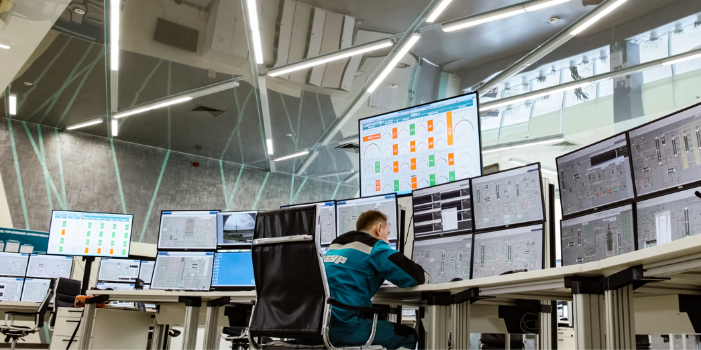
Streamlining Workflow Management Through BIM Automation
Introduction
The construction industry moves fast. Managing workflows efficiently is key to completing projects successfully. From planning to delivery, smooth workflows help teams meet deadlines, use resources wisely, and stay on the same page. Building Information Modeling (BIM) has changed how workflows are managed. When combined with automation, it becomes even more powerful. BIM automation cuts out repetitive tasks, reduces mistakes, and makes teamwork easier. It replaces traditional methods with tech-driven processes that save time and improve accuracy. In this blog, we’ll look at how BIM automation is reshaping construction workflows. By adopting these innovations, businesses can work smarter, not harder, and deliver better results.
Understanding BIM and Its Role in Construction
Building Information Modeling (BIM) is a digital way to represent a building's design and function. It acts as a single source of truth for everyone involved in a project. Architects, engineers, and contractors can all access the same updated and accurate information. This helps them work together better and avoid confusion.

BIM simplifies project planning by bringing everything into one place. It handles details like designs, materials, and timelines, making complex tasks easier to manage. With BIM, teams can identify potential issues early and solve them before they cause delays.
In today’s fast-moving construction industry, BIM is essential. It improves communication, saves time, and reduces errors. Whether for small projects or large developments, BIM helps teams stay organized and deliver better results.
The Importance of Workflow Management in Construction
Workflow management is vital for keeping construction projects on track. It ensures tasks are organized, timelines are met, and resources are used efficiently. Without proper management, projects can face delays, higher costs, and reduced quality.
Streamlined workflows help teams work better together and avoid common mistakes. They align schedules, materials, and manpower, so everything moves smoothly from start to finish. When workflows are poorly managed, confusion grows, deadlines are missed, and budgets spiral out of control.
BIM plays a big role in improving workflow management. It centralizes information and automates repetitive tasks. This reduces errors and keeps everyone on the same page. By using BIM, teams can plan better, adjust faster, and deliver projects more successfully. Good workflow management isn’t just important—it’s the foundation for any successful construction project.
Integrating Automation into BIM Workflows
Automation makes BIM workflows faster and smarter. It handles repetitive tasks like clash detection, scheduling, and data entry. These are tasks that can take up a lot of time and are prone to mistakes when done manually. By automating them, construction teams save time and reduce human error.

Clash detection, for example, identifies conflicts between building systems early in the design phase. Automation ensures these issues are flagged and resolved quickly, preventing costly fixes during construction. Scheduling automation keeps timelines accurate and updates instantly when changes are made. Data entry automation ensures consistent and error-free information across the project.
With these tasks automated, professionals can focus on work that adds more value. They can spend more time on creative design, optimizing plans, and making strategic decisions that improve project outcomes. Automation doesn’t just save time—it helps teams think bigger and work smarter.
Integrating automation into BIM workflows transforms how construction projects are managed. It creates a seamless process that boosts efficiency and accuracy while freeing up teams to innovate and solve problems. In today’s competitive industry, automation is no longer optional—it’s the key to staying ahead.
Benefits of BIM Automation in Workflow Management
BIM automation offers several game-changing benefits for managing construction workflows. It enhances collaboration, boosts accuracy, and saves both time and money.
Enhanced Collaboration: Automation ensures that all project stakeholders, from architects to contractors, have access to the most updated and accurate data. This fosters better communication and coordination. Teams can work together more efficiently, avoiding delays caused by outdated or incomplete information. Everyone stays aligned, resulting in smoother project execution.

Improved Accuracy: Manual updates often lead to errors, which can disrupt the entire workflow. Automation reduces these mistakes by ensuring that information is updated consistently across all platforms. This level of precision leads to more reliable project outcomes and fewer costly revisions.
Cost and Time Savings: By streamlining workflows, automation significantly cuts project timelines. Tasks like clash detection, scheduling, and quantity take-offs are completed faster, allowing teams to focus on higher-value activities. This not only speeds up project delivery but also reduces labor and resource costs, making projects more profitable.
Incorporating BIM automation into workflow management helps teams work smarter, not harder. It ensures projects are completed on time, within budget, and with the highest quality standards, setting a new benchmark for success in the construction industry.
Implementing BIM Automation: Best Practices
To make the most of BIM automation, it’s important to follow best practices. These ensure smooth adoption and consistent results for your projects.
Standardize Processes: Start by creating clear and consistent procedures for managing data. This ensures that all team members are on the same page and working in alignment. Standardized workflows reduce confusion, minimize errors, and improve communication between teams.

Invest in Training: Equip your teams with the knowledge and skills needed to use BIM and automation tools effectively. Regular training sessions help team members stay updated on the latest technology and maximize its benefits. When your staff is confident with these tools, they can use them to their full potential.
Leverage Advanced Tools: Take advantage of advanced BIM features to unlock the full power of automation. Use tools that automate tasks like clash detection, scheduling, and cost estimation to save time and resources. Robust BIM systems also enhance accuracy and boost overall project performance.
Monitor and Optimize: Automation isn’t a set-it-and-forget-it process. Regularly review your workflows to identify areas for improvement. Make adjustments to address inefficiencies and keep processes running smoothly. Continuous optimization ensures you’re always working at peak efficiency.
By following these best practices, you can fully integrate BIM automation and achieve better results on every project.
Future Trends in BIM Automation
The future of BIM automation is shaped by exciting advancements in technology. These trends promise to make construction workflows even smarter and more efficient.
AI Integration: Artificial Intelligence is enhancing BIM by offering predictive and analytical tools. AI can analyze large datasets to identify potential risks, suggest design improvements, and optimize resource allocation. This helps teams make data-driven decisions faster and with greater accuracy.

Cloud-Based Collaboration: Cloud technology is transforming how teams work together. Real-time updates ensure that everyone has access to the latest project information, no matter where they are. Remote teams can collaborate seamlessly, improving efficiency and reducing delays caused by outdated data.
Mobile Accessibility: Mobile-friendly BIM tools are improving on-site responsiveness. Teams can access project data, update models, and communicate instantly using their smartphones or tablets. This speeds up decision-making and keeps projects moving forward without unnecessary delays.
These trends are setting the stage for a more connected, responsive, and efficient construction industry. By adopting these advancements, businesses can stay competitive and deliver better outcomes.
Conclusion
BIM automation is transforming how construction projects are managed. By streamlining workflows, reducing errors, and improving collaboration, it empowers teams to deliver projects more efficiently and effectively. From automating repetitive tasks to leveraging advanced tools, BIM automation enables construction professionals to focus on innovation and high-value work. Emerging trends like AI integration, cloud-based collaboration, and mobile accessibility are further revolutionizing the industry, ensuring teams stay connected and responsive. Adopting BIM automation isn’t just about keeping up—it’s about staying ahead. By embracing these technologies, construction businesses can achieve better outcomes, save time and money, and maintain a competitive edge.